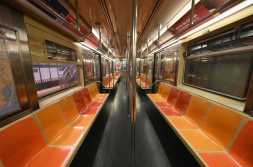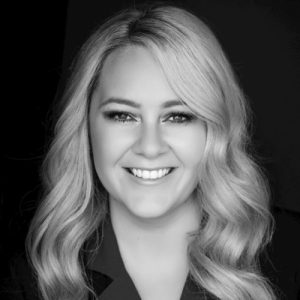Innovation labs take a gamble to improve city government

In July 2016, San Francisco came together with local nonprofits, several universities, and the federal government to launch a shiny new venture: Superpublic, an innovation lab. At the ribbon-cutting ceremony in the lab’s 5,000 square-foot space in downtown San Francisco, the city’s former mayor Mark Farrell called the project “the future.”
But within a year, the lab had shut its doors.
Over the past decade, civic innovation incubators like Superpublic have become something of a trend in city government. Though their work can vary widely, their basic goal is to fuse out-of-the-box thinking into government, often by implementing new technology. The labs bring in tech companies or university researchers to spitball ideas with municipal officials and then pilot new projects — like a city-services app or a school bus tracker.
Innovation labs are growing in number because they are critical for modern government, leaders at labs across the country told StateScoop, but, as the case of Superpublic illustrates, they are not always sustainable.
“The reality of government innovation is that it’s actually very difficult. It’s very hard. It goes very slowly. Whenever you change things, you’re basically up against the status quo,” said Jorrit de Jong, a senior lecturer at the Harvard Kennedy School who specializes in public sector innovation.
De Jong runs innovation “field labs” out of Harvard’s Ash Center for Democratic Governance and Innovation, where his graduate students partner with local government to solve problems. Their work has focused on creating new metrics to help cities in eastern Massachusetts identify properties at risk for abandonment, before they become eyesores or threaten public safety. Next year, the course will expand to work with ten cities in New York.
De Jong said the officials he works with with are eager to innovate. “The misconception is that governments, bureaucrats don’t want to change. That’s not it,” he said.
Rather, he said, governments are designed to guarantee continuity and thus struggle to accommodate innovation. And labs, even if backed by passionate leaders across sectors, can get tangled in bureaucracy, struggling to implement their projects efficiently and attract steady funding.
Such was the case for Superpublic. Advisers to the project blame its July 2017 closure on the lab’s failure to lock down funding as government priorities shifted.
“There was a tremendous amount of goodwill to create Superpublic, and there wasn’t a tremendous amount of money,” said Marcia Kadanoff, the CEO of the social impact consultancy Maker City and a former strategic adviser for Superpublic.
In its first year, Superpublic partnered with the San Francisco mayor’s office, the foundation City Innovate, UC Berkeley, and Microsoft, among others, to work on municipal transportation problems. The lab’s detailed report on solutions, which was released to a select group of cities, was a success, Kadanoff said.
When the new federal administration arrived in January 2017, though, Kadanoff said that, suddenly, federal funding for innovation projects became scarce. There was “more turnover than is natural,” she said, among many government agencies. The Department of Transportation did not award Superpublic the innovation grants that it had anticipated, and the lab was forced to shut down. Superpublic co-founder Gert Christen confirmed that financial issues caused the closure.
“Funding is the critical problem for these innovation labs,” Kadanoff said, adding that though Superpublic was short-lived, she believes it helped lead the way for later innovation initiatives in San Francisco. Its former location downtown now houses City Innovate’s Startup in Residence program, a national civic technology initiative.
‘Hard to measure’
Despite the financial uncertainty that the labs can face, they have continued to crop up across the country. The online platform Apolitical counts 20 civic innovation labs in the U.S., at least five of which have launched within the past three years. The list maps the labs primarily in large cities on the east coast and California, though there are also projects in Austin, Chicago, and Louisville, Kentucky.
Municipal officials who launched the labs say they promise government an avenue to access cutting-edge technology and research. Cities have become aware of their need to catch up with a private sector that is racing ahead with innovations, they say, and the labs can narrow that divide.
“Innovation is often born out of crisis. Some innovations are just prompted by the availability of new technologies or possibilities, but very often, it’s not a nice-to-innovate situation but a need-to-innovate situation,” de Jong said.
And when innovation labs survive, they do pull in fresh ideas to cities. Boston’s office of New Urban Mechanics, which comprises many loosely-defined innovation labs, has tested autonomous vehicles and piloted new zoning tools for housing, among other projects. Sacramento’s innovation lab, in the two years since it launched, has piloted micro-shuttles that it says have dramatically reduced traffic congestion and improved mobility in some nearby counties. In Philadelphia, officials say internal innovation consulting has improved government processes.
Measuring the real impact of these pilot projects and splashy technologies is where innovation work becomes more murky. For Andrew Buss, the deputy CIO for innovation management in Philadelphia, who oversees the city’s innovation lab, it requires careful evaluation — but also a kind of leap of faith. Ultimately, he said, quantitative measures “are really just metrics.”
“This is not necessarily what people want to hear, but I think there has to be some sort of presumption with this kind of work, that if you are training people and you are providing a space to share ideas across disciplines and departments, there has to be something good that comes out of that,” he said. “But the true outcomes are hard to measure.”
Though Buss says that doesn’t mean that innovation efforts can’t be lasting or impactful. “I’m very comfortable saying that in Philadelphia, we have established a pretty solid network of innovation that is continuing to grow and that I think adds a lot of value to the city. You just have to point to different ways where you see that,” he said.
Monica Hernandez, the director of innovation and partnerships at the Sacramento Area Council of Governments, who helps head up the civic lab, told StateScoop that the value of Sacramento’s lab went beyond any particular project. It is pushing a cultural shift in municipal government, she said.
“It’s changing how our staff members do their work — all around the agency, not just in this little Civic Lab space,” Hernandez said.
Sacramento’s work is evidence that institutionalizing innovation is possible, she said, though acknowledged that funding their projects had been “very challenging.”
Buss, too, said Philadelphia has run into challenges sustaining its innovation work. He said he anticipates more in the future.
“City government’s interest in different initiatives — whether it’s innovation or anything else — rises and falls. When we started this work, not surprisingly, there was a great interest specifically around innovation. One of the challenges for us as a group was to sustain ourselves and our work during the [2016] mayoral transition. That was quite challenging,” Buss said.
Such risks are just the nature of civic labs, Hernandez said, which must embrace the possibility of a failed venture and hold firm in their belief in the work’s inherent value.
She learned that lesson, she said, when the Sacramento civic lab had to abandon its original plans in its first year when staff saw the enormous challenges government procurement posed for innovation. The abrupt shift in direction at first threw them off, Hernandez said.
“But it was great because we actually had to model what we were trying to get our participants to embrace,” she said. For the lab, that was to take a gamble for the sake of making change.






